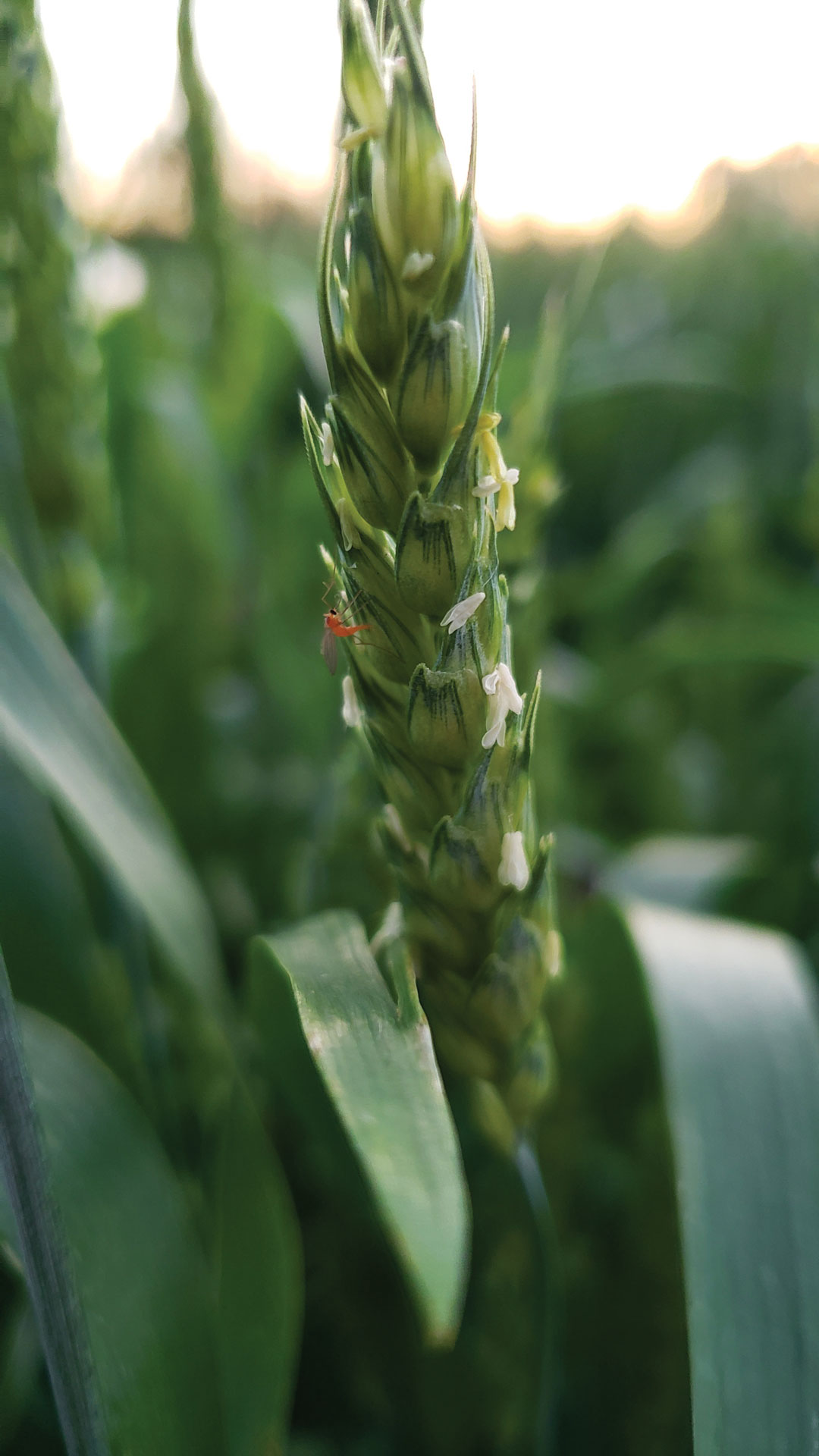POSSIBLE PEST OUTBREAK
BY GEOFF GEDDES • PHOTO COURTESY OF TYLER WIST
Over the last several years, dry conditions have led to lower wheat midge levels in Western Canada, but spring rains in 2020 appear to have sparked a potential outbreak in various regions of the Prairies. Details and confirmation of these nascent flare-ups await release of data from the annual wheat midge survey. In the meantime, greater attention to midge management may well be required in the run-up to the incoming crop year.
“The 2021 forecast map released recently by Alberta Agriculture and Forestry is some cause for concern,” said Tyler Wist, research scientist, field crop entomology, Agriculture and Agri-Food Canada (AAFC). “Based on field samples of [non-parasitized], overwintering wheat midge cocoons, many areas around Red Deer and north have more cocoons than in the past few years. If those spots see moisture conditions conducive to wheat midge development in spring 2021, the pest will develop and synchronize with spring wheat, and then we have a problem.”
In the next month or two, that map will be combined with a similar one from Saskatchewan to create a regional map as part of the annual midge population modelling conducted by the Prairie Pest Monitoring Network (PPMN). This modelling is used to forecast pest numbers and predict the areas in which crops may be affected.
“Based on survey data from 2019, we expected some regions to be at risk of wheat midge damage in 2020. Wet spring weather resulted in 2020 being a strong year for wheat midge,” said Meghan Vankosky, AAFC research scientist, field crop entomology, and co-chair of the PPMN. “Though rain is sometimes hard to predict, adequate moisture at the right time could produce an outbreak in 2021.”
While the modelling is not perfect, farmers are encouraged to use the map as a decision-making tool in the variety selection process and to make field scouting plans for the coming crop season.
Control of wheat midge can be a challenge, as the best spraying option—chlorpyrifos, an organophosphate—will be phased out over the next three years. In certain instances, the presence of parasitoids, primarily wasps that kill midge, may also help reduce damages.
Fortunately, the emergence of midge-tolerant wheat a little more than a decade ago has been a game changer for farmers who may choose from 35 midge-tolerant wheat varieties across seven classes. Tolerance is indicated by the appearance of the initials “VB” after the variety name to signify a varietal blend. Prior to this innovation, midge management was more difficult.
“Before we had midge-tolerant varieties, management meant standing in your field at dusk or dawn, staring at wheat heads and looking for midge,” said Wist. “You would then make spraying decisions based on thresholds. If you saw one wheat midge in four to five heads of wheat, that was your yield threshold, and one in eight to 10 heads was your grade threshold. Elevators look for percentage of damaged kernels, and a downgrade from No. 1 to No. 2 can cost you a lot of money.” The use of resistant varieties necessitates fewer field scouting sessions and protects the financial bottom line.
AAFC produced a cost–benefit analysis for midge-tolerant wheat in 2016. It determined that, conservatively, the adoption of midge-tolerant wheat by farmers resulted in a net savings of $20 per acre while ranges reported by farmers and industry representatives went as high as $36 and $70, respectively.
If the amount of midge-tolerant wheat grown in Western Canada remains at about two million acres per year, the study pegs annual savings at around $40 million. This may not be a huge sum, but it’s a nice shot in the arm for farmers who adopt these varieties.







Comments